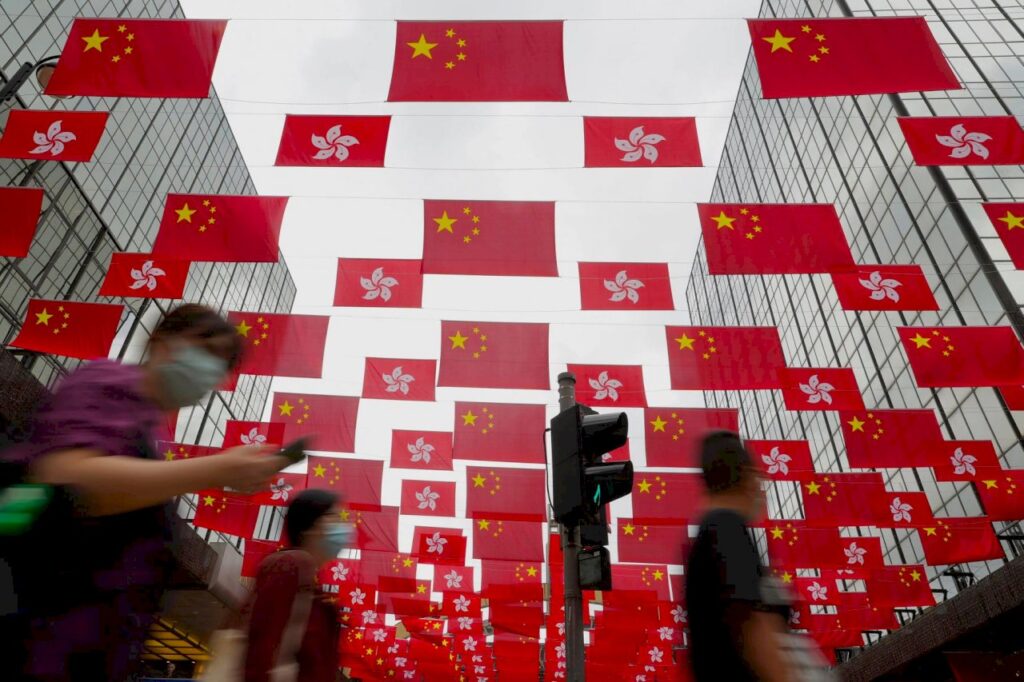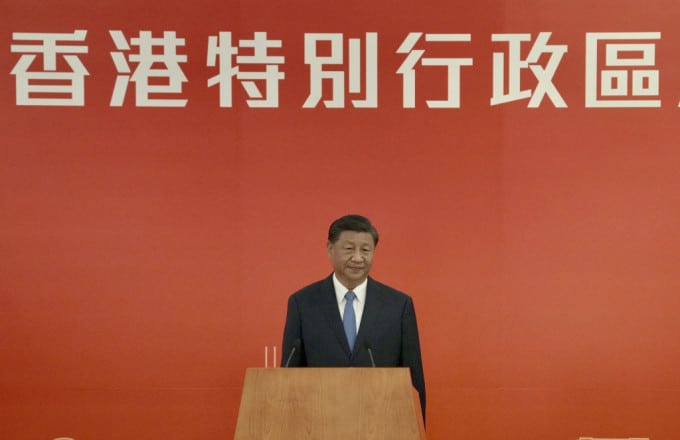The issue of Hong Kong's youth has become a national issue, and national identity has become the focus of the news. The Hong Kong Citizen Identity Survey published by the University of Hong Kong Minyan at the end of last year showed that the rate of Hong Kong young people (18 to 29 years old) claiming to be Hong Kongers rose to 69.7%, a record high in the 20 years since the handover, while the rate of self-proclaimed "Chinese" There is only 0.3%, which is the lowest record since the return. This result was widely reported by the media, and the public generally believed that Hong Kong youth did not identify with Chinese identity.
Report ignores multi-identity investigation
The above results are actually due to flaws in the questionnaire design and do not mean that Hong Kong youth’s identification with “Chinese” identity has declined. Hong Kong's identity identity survey has two different questionnaire designs: the "identity opposition" questionnaire design and the "multi-identity" questionnaire design. The former shows that the proportion of Hong Kong youth who call themselves "Chinese" dropped to 0.3% at the end of 2017 has reached a record low, but the latter shows that the degree of Hong Kong youth's identity as "Chinese" has increased significantly in the second half of 2017, and has turned from negative to positive.
The "identity opposition" questionnaire design categorizes identity into two types: "Hong Kong people" and "Chinese people", or into four types ("Hong Kong people", "Chinese people in Hong Kong", "Hong Kong people in China" ” and “Chinese”) to give respondents a choice. In a questionnaire designed to choose between "Hong Kong people" and "Chinese", if the proportion of people who identify as "Hong Kong people" increases, the proportion of people who identify as "Chinese" will definitely decrease. The questionnaire cannot reflect the public's attitude towards "Hong Kong people". ” and “Chinese” identities can be strengthened (or weakened at the same time) at the same time.
As for the one-of-four questionnaire, although the two mixed identities of "Hong Kong Chinese" and "Hong Kong Chinese" are included, there is still an identity conflict, that is, the proportion of identifying with one of the identities increases, and the proportion of identifying with the other identities will definitely decrease. .
In view of the above blind spots, the "Multiple Identities" questionnaire was designed with two independent questions asking the public's degree of identification with "Hong Kong people" and "Chinese" respectively, and the public's sense of identification with the two identities of "Hong Kong people" and "Chinese" , can be strengthened or weakened at the same time, or one plus and one minus.
The HKU Private Research Institute uses both the above two questionnaire designs. However, the media has always focused on reporting the questionnaire results of "identity opposition" and ignored the questionnaire results of "multiple identities". The results of the "Multiple Identity" questionnaire conducted by the University of Hong Kong's private research show that Hong Kong youth's identification with "Chinese" (measured from 0 to 10) fell below 5 points (median) in 2014, and has been for three consecutive years. It hovered below the median every year, and fell to a historical low of 4.37 points in mid-2017; however, it rose to 5.05 points by the end of 2017, breaking through the median for the first time in three years, indicating that identity has shifted from a negative tendency to a positive tendency. .
The author downloaded the original data of the survey from the website of the University of Hong Kong for further analysis and found that the Hong Kong youth’s sense of identification with “Chinese” increased to a statistically significant level in the second half of 2017 (i.e., the confidence level of 95%), indicating that Hong Kong youth's identification with "Chinese" has significantly changed from negative to positive.
The author is the person in charge of the "One Country, Two Systems Index" research on democratic thinking. This study commissioned the CUHK Asia Pacific Institute to conduct telephone surveys in June and December 2017, using a "multi-identity" questionnaire design, with scores ranging from 1 to 7, with a median of 4 points. The survey also showed that Hong Kong youth's sense of identity as "Chinese" increased between the middle and the end of last year (from 3.97 points to 4.04 points), and turned from negative to positive (that is, from below the median to high). at the median).
The mainstream of society has a dual identity
However, although teenagers' identification with Chinese identity has increased slightly, it is still only greater than 4. Policymakers still need to work hard to cultivate teenagers' identification with the country. Teenagers’ identification with “Chinese” appears to be polarized: Teenagers in 40% have a higher identification with “Chinese” (higher than 4 points), while teenagers in 39% have a lower identification with “Chinese” (less than 4 points). , the remaining 21% (32 people) agreed with the medium (4 points).
The "One Country, Two Systems Index" study based on democratic ideas, using the questionnaire design of "Multiple Identities", clearly answered two important questions about identity:
1. How many citizens identify as "Hong Kong people" and "Chinese" at the same time?
2. Are the two identities of "Hong Kong people" and "Chinese" antagonistic to each other or complementary to each other?
The questionnaire design of "identity opposition" cannot answer these two questions, so research on these two issues has been ignored in Hong Kong for a long time.
The "One Country, Two Systems Index" report of Democratic Thoughts uses a scatter plot to show the overall public's level of identification with "Hong Kong people" and "Chinese people". The horizontal axis in the [Figure] represents the degree of identification with "Hong Kong people", and the vertical axis represents the degree of identification with "Chinese people". On a scale of 1 to 7, a score of 4 represents moderate identification, which is the origin of the coordinates in the figure. A score above 4 represents high identification, and a score below 4 represents low identification.
The dual identities of Hong Kong people and Chinese people are recognized by most citizens. In the area on the upper right side of the coordinate axis, there are citizens who have a high level of recognition of both the identities of "Hong Kong people" and "Chinese people". In June 2017 and The survey in December has been high, and has slightly increased from 55.9% to 56.1%, indicating that the proportion of citizens with dual identities has increased.
A large number of citizens give the two identities the same rating, and there is no obvious primary identity. It is believed that there will be many difficulties in choosing one of the two identities in the "identity opposition" questionnaire. 42% Citizens identify equally with "Hong Kong people" and "Chinese people", and the three largest groups all have a strong identification with "Hong Kong people" and "Chinese people" (i.e., the scores are both 5 score, 6 or 7), reflecting that the "identity opposition" questionnaire design often quoted by the media has always ignored the dual identity of a large number of citizens.
The statistical analysis of both rounds of surveys found that there is a clear positive correlation between citizens' identification with "Hong Kong people" and "Chinese people". That is, the more citizens identify with the identity of "Hong Kong people", the more they identify with the identity of "Chinese people", and vice versa. The rank correlation coefficient between the two is 0.184 (0.132 in the previous round). The relationship between the two is statistically significant, reaching the confidence level of 99%. The identity of "Hong Kong people" and "Chinese people" actually complement each other and are not a trade-off between one and the other.
Conflicts between the mainland and Hong Kong have increased dramatically in recent years. Hong Kong youth's sense of identity as "Chinese" fell below the median in 2014, the year of Occupy Central, turning from positive to negative. However, surveys conducted by Democratic Thinking and the University of Hong Kong found that in the second half of 2017, young people had emerged from the sluggish state of lacking national identity, and their sense of identity as "Chinese" had turned from negative to positive. The blind spot in the design of past polls was that they mistakenly placed the two identities in opposition and seriously underestimated citizens with dual identities. Those who consider themselves both Hong Kongers and Chinese have always been the majority in society. Just as "one country, two systems" needs to be organically integrated, the dual identities of "Hong Kong people" and "Chinese people" can also be jointly constructed. In order to create favorable conditions for the implementation of "one country, two systems", we should re-examine the long-undervalued national identity.
Song Enrong is co-convenor (research) of Democratic Thoughts and visiting professor of the Department of Economics of the Chinese University of Hong Kong;
Pan Xuezhi is a research assistant at the Shanghai-Hong Kong Development Joint Institute of the Chinese University of Hong Kong.
Note: For detailed report, please see http://pathofdemocracy.hk/2018-one-country-two-systems-index/



